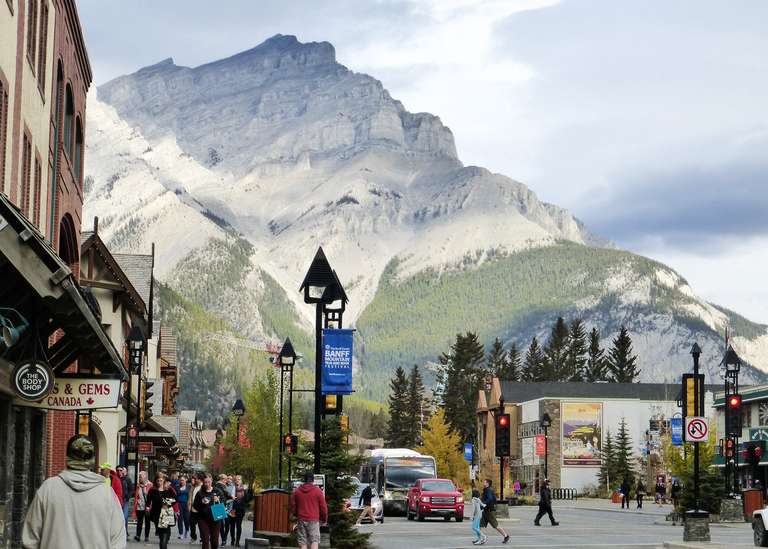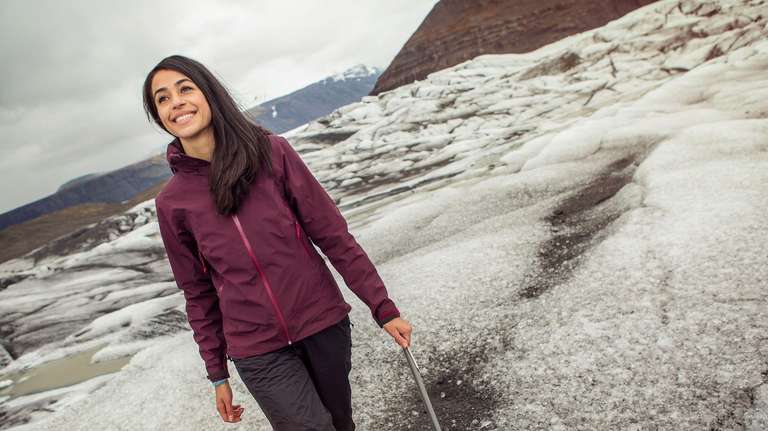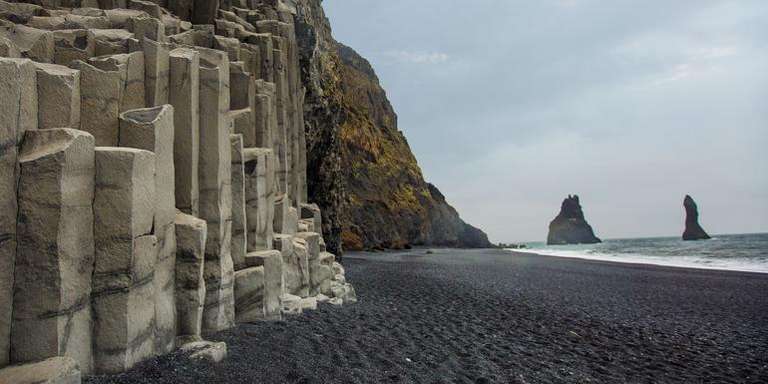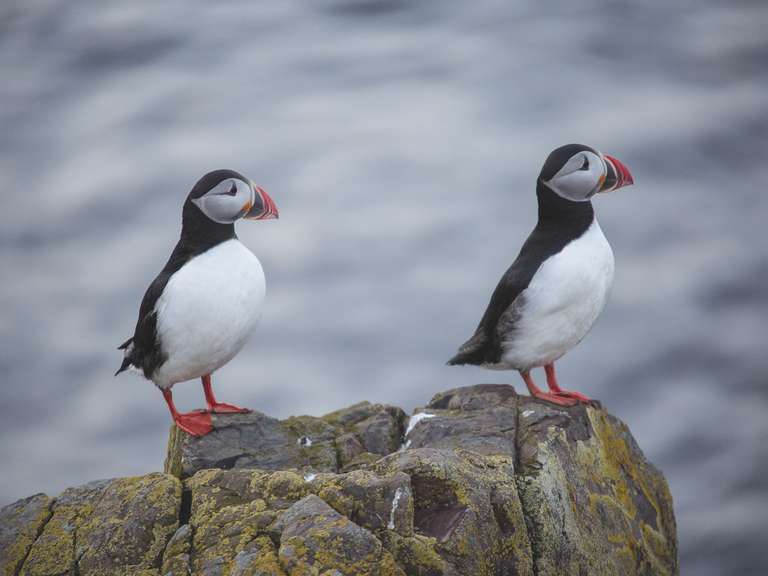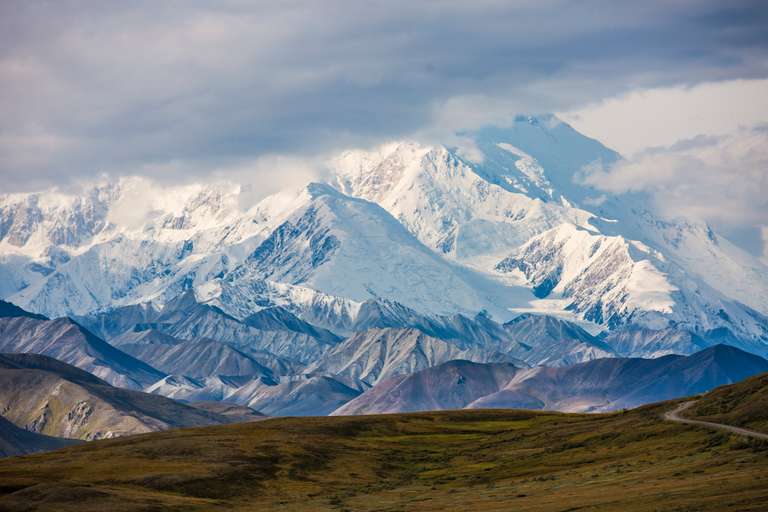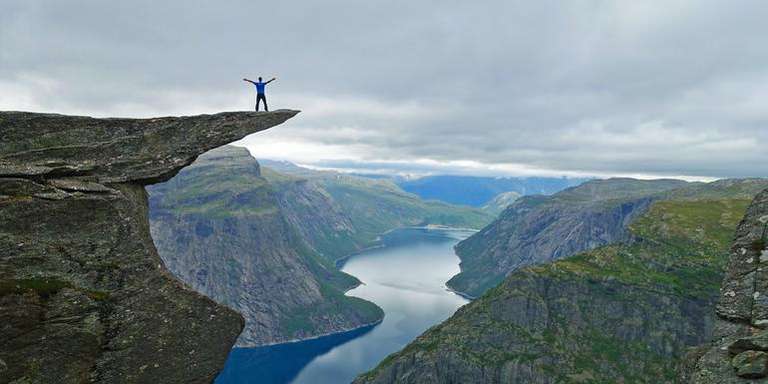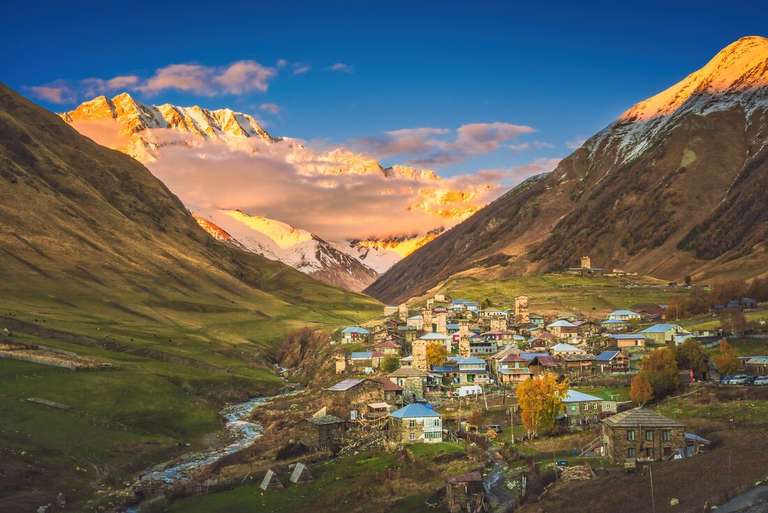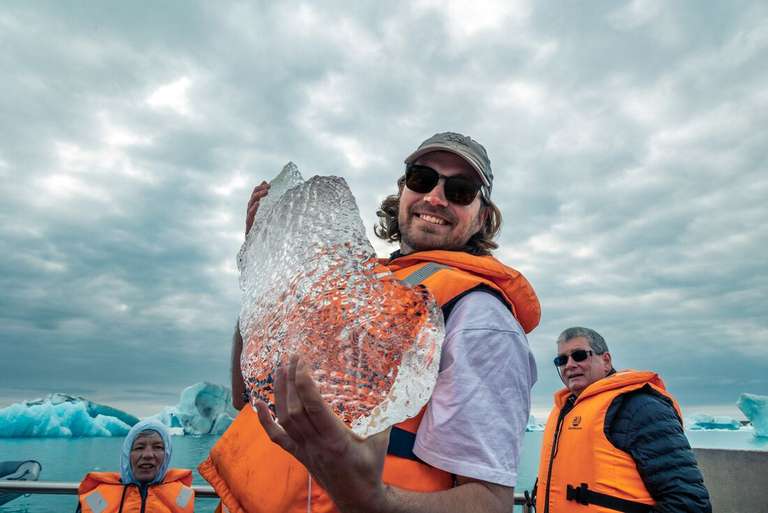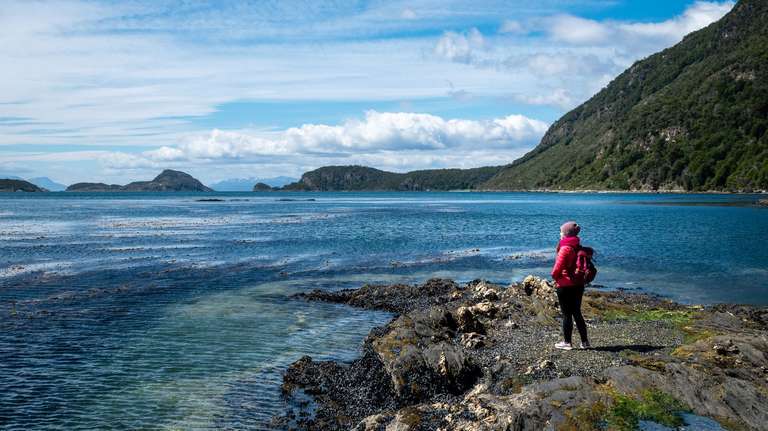10 Best Glaciers in Iceland

- Fleur Elliott
- From
- Fleur Elliott
- From
- Sally Campbell
- From
- Carly J
- From
1. Vatnajökull Glacier
Vatnajokull glacier (featured above) is not only the biggest glacier in Iceland - it’s the biggest in Europe! This makes Vatnajokull a fantastic glacier to visit with a variety of activities. Svínafellsjökull, located within the Vatnajokull glacier, has been the location for films such as Interstellar and Batman Begins. Visit if you want to see ice caves, glacial lakes and Diamond beach, littered with mini icebergs. The Vatnajokull National Park is open year round and summer is a popular time to hike, though if you want to tour the ice caves, they are generally accessible between November and March.
2. Langjökull Glacier
The second largest glacier in Iceland, Langjokull Glacier means ‘long glacier’ due to its oblong shape. Found to the west of the Icelandic highlands, Langjokull is within ‘The Golden Circle’ of attractions in Iceland. Snowmobiling tours are the thing to do here as they let you cover a lot of ground in a short space of time. There’s also a man-made ice cave/tunnel to explore where you can get married in an ice chapel! More active snow sports like skiing and snowboarding are also available. You can visit the glacier year-round, though it does recede in the summer as do many others.
3. Hofsjökull Glacier
Hofsjokull is the third largest glacier in Iceland. However, Hofsjökull glacier is notoriously hard to reach, which makes it more attractive as a destination! Found in the middle of the Icelandic highlands, this part of Iceland is only accessible during the summer months. Tours are available, but generally only in 4x4 vehicles and with knowledgeable guides. Getting to Hofsjokull involves taking the Kjölur road which runs between Hofsjokull and Langjokull through the highlands.
4. Mýrdalsjökull Glacier


If travelling deep into the highlands sounds a bit too much, there are glaciers in Iceland easily accessible along the south coast. Myrdalsjökull glacier is the fourth largest glacier in the country and is home to one of the largest active volcanoes in Iceland, Katla. 4x4 or snowmobiling tours are also a great touring option here however there’s also a special hiking trail. The Fimmvörðuháls pass takes hikers from Myrdalsjökull glacier to its neighbour, Eyjafjallajökull glacier.
5. Eyjafjallajökull Glacier
Although slightly smaller in size, this glacier is more famous than its neighbour, Myrdalsjökull, due to the 2010 eruption of the Eyjafjallajökull volcano. The hiking trail is a fantastic way to see two glaciers in Iceland in one, and it takes you to the very top of the newly erupted volcano as well as the Skógafoss waterfall.
6. Sólheimajökull Glacier
Sólheimajökull is a glacier tongue from the larger Myrdalsjökull glacier in South Iceland, though it’s very popular in its own right. This is due to its breath taking ice crevasses and caves that make for some fantastic ice hiking and climbing. Tours are available for all skill levels with professional guides.
7. Drangajökull Glacier
Drangajökull glacier is special in Iceland as it is the only one whose height does not exceed 1000m and, unlike many others, it thankfully hasn’t receded in recent years. It’s a little out-of-the-way, being in the remote Westfjords in the far north of the country. However, it is one of the best places to witness the midnight sun at the time of the summer solstice. Once you arrive in Ísafjörður, tours can be taken to Drangajökull.




8. Snæfellsjökull Glacier
While Snaefellsjokull is one of the smaller glaciers in Iceland, it is still one of the most popular. Located in Snaefellsjokull National Park, it is easily accessible in the east of the country via the south coast road. Snæfellsjökull’s rise to fame started when Jules Verne chose it as the setting for his classic novel ‘Journey to the Centre of the Earth.’ The small glacier is impressive in itself, but the surrounding landscape of lava fields, waterfalls and black beaches also lure visitors here. There are plenty of hiking trails available and a very dedicated visitors centre.
9. Falljökull Glacier
Falljokull literally means ‘falling glacier’ and it is the wondrous sight of ice crashing down the mountain towards the ocean that brings people here. Falljokull is an outlet glacier from Vatnajokull and is located in the Southeast of Iceland along the coastal road. You can visit Falljokull all year and tours from Skaftafell to Falljokull and then onto Vatnajokull glacier are very popular, allowing visitors to take time trekking before getting back on the tour bus.
Öræfajökull is possibly the most famous of Vatnajokull’s outlet glaciers. Iceland’s largest active volcano sits under the ice at Oraefajokull, at the southern end of the Vatnajokull glacier. Here you can find Iceland’s highest point, Hvannadalshnúkur, which stands at 2110m. For this reason, Oraefajokull attracts hikers looking for glory - who doesn’t want to say they’ve reached the highest peak in Iceland?! The hike can take up to 15 hours in total, and should only be undertaken with professional guides. If you are interested in hiking, take a look at some of the best day hikes in Iceland.
There are many exciting activities to be undertaken in Iceland. However, you should do so with the utmost care. Pay attention to weather conditions, avoid venturing into remote areas alone and always use local guides for difficult trails. There are tons of glaciers tours, volcano tours, and ice cave tours in Iceland to choose from, so you’re bound to find one that’s a perfect fit!

